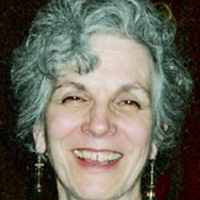
Brit Tzedek was the most outstanding grassroots American Jewish peace organization on the Israeli-Palestinian conflict. Its primary focus was the grassroots organizing of U.S. Jews.
Brit Tzedek was independent of Israeli peace organizations, but it did work in coalition with them. In 2003-4, we organized in tandem with the Geneva Initiative. While Israelis were organizing to garner support for a model permanent status peace agreement based on previous official negotiations – the highest point of grassroots organizing since Oslo – we were doing the same in the U.S. Geneva negotiators MK Amram Mitzna and Naomi Chazan were keynote speakers at our November 2003 National Conference in Boston, attended by nearly 1000 people. We then organized synagogue-based speaking tours with them and also with Yossi Beilin and Yasser Abed Rabo – the architects of the Accord, and Daniel Levy and Ghaith Al-Omari –the lead drafters. In December 2003, I traveled to Geneva, Switzerland with board president Marcia Freedman and Advocacy Chair Steve Masters for the official signing. We made a documentary film of the visit, and it was shown at hundreds of house parties throughout the country. It was interesting to see the Geneva Initiative’s efforts to develop grassroots organization in Israel where they attracted majority support and a lot of attention until Sharon diverted it with his announcement of the Gaza withdrawal.
We used advocacy tactics from other grassroots movements in our national campaigns to put pressure on our community and government. American Jews were our primary focus. The tactics we used to build support, pressure, and momentum included petitions, calls, pledges, tabling, candidate forums, house parties, one-on-one organizing, synagogue-based tours of Israeli peace advocates, and the like.
In 2003, we organized our first petition campaign, “Bring the Settlers Home to Israel,” to encourage the Israeli government to end its policy of providing financial incentives to settlers and to use the same money to re-settle them within the Green Line. We delivered the petition with 10,000 signers to the administration.
After this, we initiated many other campaigns. In most – Let’s Talk, We’ve Got Your Back Obama, etc. – we put pressure on Congress or the Administration, but we would also target Jewish communal agencies.
We developed grassroots advocacy within our chapters to meet with Congress locally and in the capitol, and to develop relationships and friendships. We provided a lot of training on how to meet with Congress people. We were key in mobilizing the passion of activist leaders and getting activists seriously devoted to our issue. We inspired activism that kept people very involved for a lot of years.
We created two parallel tracks of Congressional advocacy. Our national office developed many contacts in Congress and worked in coalition with other peace organizations. Our chapters did outreach to Congress in their local communities.
Lastly, we worked very well with other Jewish peace organizations and worked in coalition with them regularly. Our transition to J Street was facilitated by the good relationships that we had built.
By the time we joined J Street, we had organized thousands of volunteers who put their heart and soul into this issue.
Diane Balser

